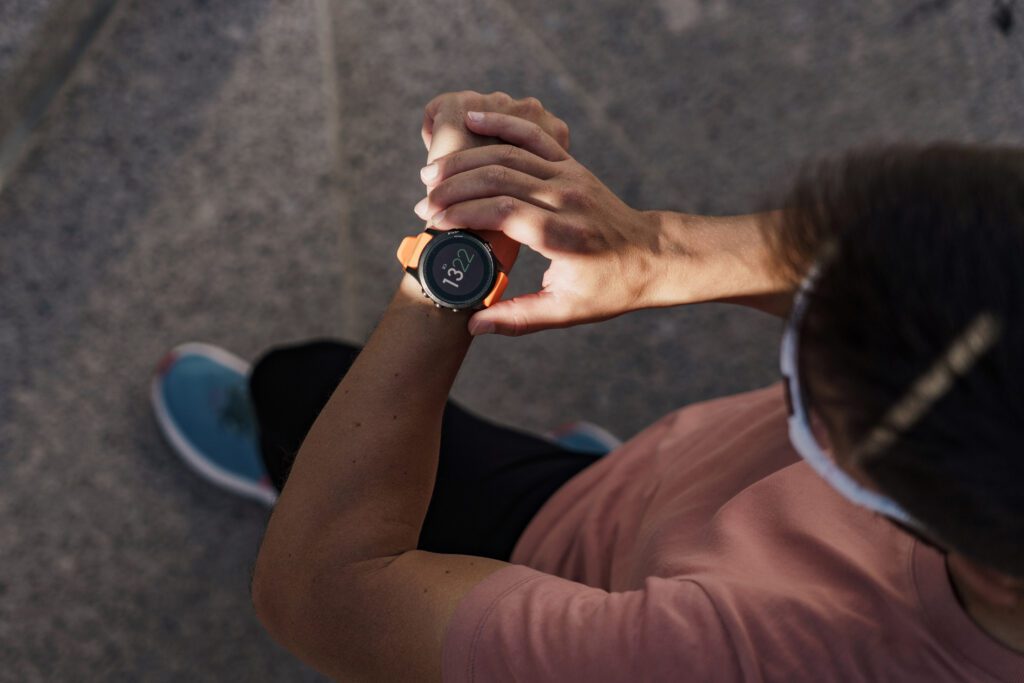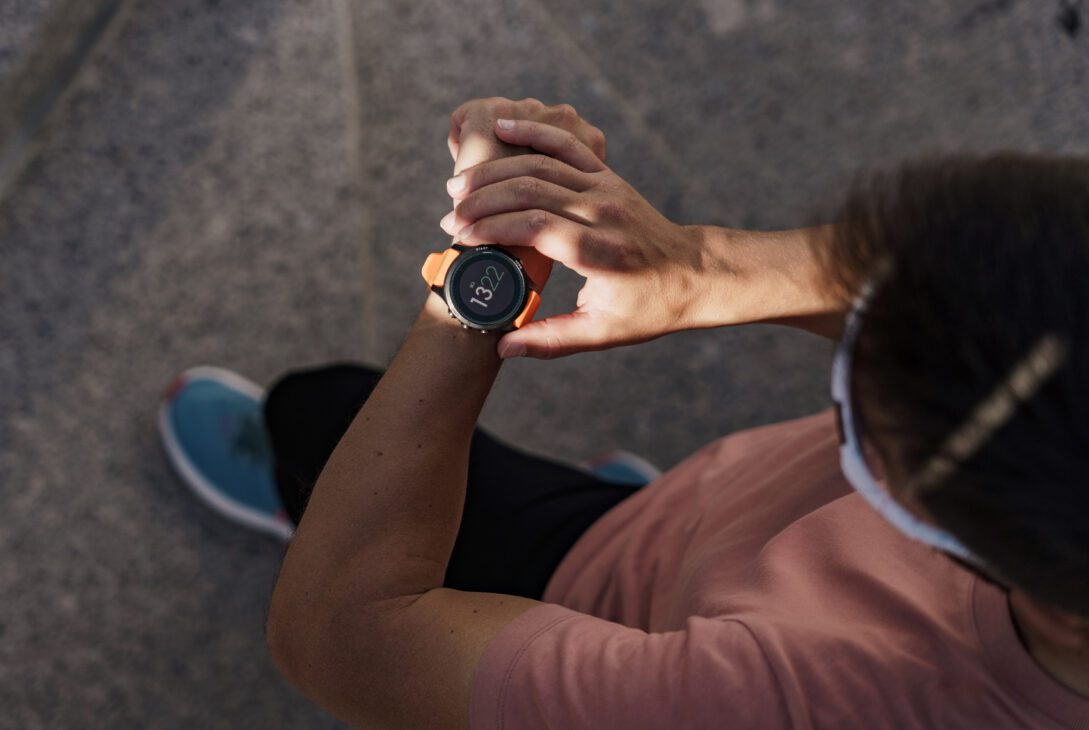Monitoring your progress and staying on track with fitness goals can be a challenge. That’s why using a physical fitness test scorecard can be a game-changer. This scorecard provides a standardized way to measure and track various aspects of physical fitness over time. It’s a great tool for anyone looking to stay committed and motivated on their fitness journey.
In this article, we will explore the benefits of using a physical fitness test scorecard, provide a step-by-step guide to creating your own, and explain how it can be used to adjust your fitness routine and set new goals.

Key Takeaways:
- A physical fitness test scorecard helps individuals track their progress toward achieving fitness goals.
- It’s a standardized way to measure and monitor various aspects of physical fitness over time.
- Creating your scorecard is easy with the step-by-step guide we provide in this article.
- The physical fitness test scorecard can help adjust your fitness routine and set new goals based on your progress.
- Long-term monitoring of your progress and the use of technology can also enhance the fitness-tracking process.
Why Use a Physical Fitness Test Score Card?
Tracking progress is a fundamental aspect of achieving fitness goals and maintaining a healthy lifestyle. One effective way to monitor improvements is by using a physical fitness test scorecard. This scorecard provides a standardized method of measuring various aspects of physical fitness, enabling consistent tracking of progress over time.
Unlike other forms of tracking progress, a physical fitness test scorecard offers a comprehensive way of monitoring multiple aspects of fitness, including cardiovascular health, muscular endurance, and overall body composition. It can also help individuals identify areas of weakness and track improvements in those areas over time.
| Advantages of Using a Physical Fitness Test Score Card: |
|---|
| Standardized way to monitor progress |
| Comprehensive measurement of various aspects of physical fitness |
| Identifies areas of weakness and tracks improvements over time |
| Encourages consistency in tracking progress |
Using a physical fitness test scorecard can provide a tangible way to measure progress and hold oneself accountable for achieving fitness goals. Whether an individual is a seasoned athlete or just starting a fitness regimen, a physical fitness test scorecard is an essential tool to keep track of progress and maintain motivation.
Creating Your Physical Fitness Test Score Card
Designing a physical fitness test scorecard that is tailored to individual fitness goals and preferences can be a helpful tool in tracking progress. Below, we provide a step-by-step approach to creating a scorecard:
Determine Your Fitness Goals:
Before designing your scorecard, it is important to determine your fitness goals and the specific aspects of physical fitness that you want to measure and track. Consider your current fitness level and identify areas of improvement.
Select Fitness Tests:
Choose the fitness tests that align with your goals and measure the aspects of physical fitness that you want to improve. Some examples may include cardiovascular endurance, strength, flexibility, and agility.
Create a Table:
Design a table to record your fitness test results. The table should include columns for each fitness test, with rows to record data and calculations. Consider adding an extra column for comments and notes.
Example of a fitness test table:
| Fitness Test | Baseline Score | Current Score | Improvement | Comments/Notes |
|---|---|---|---|---|
| Cardiovascular Endurance | 10 minutes running | 12 minutes running | +2 minutes | Increased pace by 0.5 mph |
| Strength | 10 push-ups | 15 push-ups | +5 push-ups | Incorporated chest press exercises |
| Flexibility | Touching toes | Halfway down shins | +3 inches | More stretching after the workout |
| Agility | 10 seconds stick drop test | 7 seconds stick drop test | -3 seconds | Regulated breathing during the test |
Be sure to keep the table organized and detailed for a complete and informative presentation of your progress. Remember to regularly update your scorecard and analyze the data to make adjustments to your fitness routine.

Essential Components of a Physical Fitness Test Score Card
Creating a physical fitness test scorecard is essential for tracking your progress toward your fitness goals and staying motivated. Here are the key components that should be included in your scorecard:
| Component | Description |
|---|---|
| Personal Information | Include your name, age, gender, and any other relevant details that can help identify you and track your progress over time. |
| Test Metrics | Choose the specific fitness tests that you want to track and record the results for each test, indicating the date in which each test was taken. The metrics are varied and can include cardiovascular endurance, strength, flexibility, balance, and more. |
| Goals | Set realistic and measurable goals for each test metric. Your goals should be specific, attainable, and time-bound, reflecting what you realistically want to achieve from the test. |
| Notes and Comments | Leave space for notes and comments on your progress, strengths, weaknesses, setbacks, and other observations that can help you track progress and set new goals. |
Remember that each scorecard should be customized to fit your individual fitness goals and preferences, so feel free to adjust it accordingly. By tracking your physical fitness test results and analyzing them over time, you can gain valuable insight into your progress and improve your fitness routine to meet your goals effectively.
Tracking Progress with the Stick Drop Test
One of the simplest fitness tests that can be used to evaluate agility and coordination is the stick drop test. This test involves dropping a stick from shoulder height, and the goal is to catch it as quickly as possible. The test is repeated three times, and the average time is recorded to calculate a middle score.
The stick drop test can be easily recorded in the physical fitness test scorecard, allowing individuals to track their progress and identify areas that need improvement. A typical scorecard could have a column for the number of stick drops and a column for the middle score, making it easy to monitor progress.
| Number of Stick Drops | Middle Score |
|---|---|
| 3 | 0.73 |
| 3 | 0.76 |
| 3 | 0.81 |
For example, the table above displays the results of three trials of the stick drop test, with each trial involving three stick drops. The middle score is calculated by averaging the time it takes to catch the stick after it is dropped for each trial. By tracking the middle score over time, individuals can see if their agility and coordination are improving over time, staying the same, or declining.
It is essential to perform the stick drop test correctly to obtain accurate results. Follow these steps to ensure proper execution:
- Stand with your feet shoulder-width apart and hold the stick at shoulder height.
- Drop the stick and try to catch it as quickly as possible.
- Repeat the test three times, with a break of one minute in between each trial.
- Record the time it takes to catch the stick for each trial and calculate the middle score.
In addition to the stick drop test, many other fitness tests can be included in the physical fitness test scorecard. By tracking progress over time, individuals can stay focused, motivated, and on track to achieve their fitness goals.
Recording Other Fitness Test Results
While the Stick Drop Test is an essential component of the physical fitness test scorecard, it is essential to record results from other fitness tests as well. Incorporating results from various tests can provide a more comprehensive picture of an individual’s physical fitness levels. Some other fitness tests that can be included in the scorecard are:
- Cardiovascular Endurance Test: This test measures an individual’s ability to perform continuous exercises, such as running or cycling, for a prolonged period. Recording results from this test can help monitor improvements in aerobic fitness over time.
- Strength Test: Measuring an individual’s strength levels in different muscle groups can help in identifying areas that require improvement. This test includes exercises such as push-ups or bench presses.
- Flexibility Test: This test measures how far an individual can stretch in different directions. Incorporating this test into the scorecard can help monitor improvements in flexibility over time.
When recording results from other fitness tests, it is essential to document them in the scorecard in a way that enables easy tracking and analysis. The scorecard’s layout should allow for comparisons across different tests, highlighting areas of strengths and weaknesses.
Tip: Keep track of all the tests you perform and the associated results, even if it feels discouraging at first. As you start improving, these records can be a valuable source of motivation.
Analyzing Your Physical Fitness Test Results
After performing physical fitness tests and recording the results, the next step is analyzing them to identify strengths and weaknesses. Analysis is an essential process in devising a suitable fitness routine that targets specific areas that need improvement. When analyzing your scorecard, identify areas where you achieved a high score and record them as strengths in your table. Additionally, note the areas where you scored low and treat them as weaknesses that need attention.
Interpretation is a crucial aspect of analyzing the scorecard. Our table below provides an example of how to interpret the data:

| Test Category | Description | Score | Interpretation |
|---|---|---|---|
| Cardiovascular Endurance | Measures the heart’s ability to transport oxygen to organs and muscles during exercise | 92% | Excellent |
| Strength | The amount of force a muscle can produce in a single maximal effort | 65% | Fair |
| Agility | The ability to quickly change direction or velocity of the whole body movements | 78% | Good |
The table should be your ultimate guide when analyzing the data. It provides you with a clear view of areas that need more work to achieve your fitness objectives.
Use the information gathered during this process to set new fitness goals that focus on areas that need improvement. This way, you can progress towards your targets effectively, monitor progress, and readjust your workout plan if needed.
Setting New Fitness Goals
Now that you have analyzed your physical fitness test scorecard, it is time to set new fitness goals. Remember that these goals should be realistic, achievable, and tailored to your personal needs and preferences.
Here are some strategies and tips to help you create your goals:
- Identify areas of improvement: Based on your scorecard analysis, identify areas where you need to improve and focus your goals on those areas.
- Set specific targets: Goals should be specific, measurable, and time-bound. For example, improve your stick drop test middle score by five points within three months.
- Make it challenging but achievable: The goals should challenge you but also be achievable. Setting unattainable goals can lead to frustration and demotivation.
- Track your progress: Use your physical fitness test scorecard to monitor your progress and adjust your goals accordingly. Celebrate your achievements!
- Consult a professional: If you are unsure about setting goals or want professional advice, don’t hesitate to consult a fitness trainer or instructor for guidance.
Remember, fitness goals are not set in stone. They can be adjusted and recalibrated as you progress on your fitness journey.
Adjusting Your Fitness Routine
Using the physical fitness test scorecard, individuals can adjust their fitness routine to optimize workouts, identify areas of improvement, and make necessary changes to enhance overall performance.
The scorecard provides a useful tool for recording and tracking progress over time, highlighting areas of strength and weakness, and identifying growth opportunities. By reviewing the data regularly, individuals can identify trends and adjust their fitness routines accordingly.
For example, if the stick drop test middle score has remained stagnant for several weeks, it may indicate that more focus is needed on improving agility and coordination. By adjusting the workout routine to incorporate more exercises that target these areas, individuals can strive to improve their scores and overall physical fitness.
Additionally, as individuals achieve their fitness goals, they can adjust their routines to set new challenges and maintain progress. By setting realistic and attainable goals using the scorecard, individuals can continuously improve their physical fitness and see ongoing health benefits.

Example Table: Fitness Routine Adjustments
| Area of Improvement | Adjustment |
|---|---|
| Agility and Coordination | Incorporate more exercises that target these areas, such as ladder drills or agility cones. |
| Cardiovascular Endurance | Increase the duration or intensity of aerobic exercises, such as running or cycling. |
| Flexibility | Add more stretching exercises to the routine, especially those targeting tight muscles. |
| Muscular Strength | Increase resistance or weight in strength training exercises, gradually working towards higher levels of resistance. |
By adjusting their fitness routine based on the data provided by the physical fitness test scorecard, individuals can strive towards continuous improvement and ongoing health benefits.
Monitoring Long-Term Progress
Consistency is key to achieving fitness goals. One way to stay motivated and continuously improve is by monitoring and tracking progress over a long period of time. Using a physical fitness test scorecard with answers is a great way to stay on track and document progress.
By looking at the scorecard, individuals can see how much they’ve achieved since beginning their fitness journey, including increases in endurance, strength, and flexibility. Seeing these improvements can help boost confidence and keep individuals motivated to continue working towards their goals.
It’s important to track progress over a longer period because it can show if there are any plateaus or declines in performance. This information can help individuals refocus their fitness goals and adjust their routine if necessary to keep making progress.
Regular assessment of the scorecard can help individuals stay accountable and create a habit of staying on top of fitness progress, which can lead to better overall health and well-being.
It’s important to remember that progress takes time, and individuals should not become discouraged if results aren’t coming as quickly as they’d like. Consistency and dedication are the keys to long-term success.
Tracking Progress with Technology
Technology has revolutionized the way we track and monitor our fitness progress. With the help of various fitness-tracking apps and devices, individuals can easily log their workout routines, monitor their physical activity, and record their progress.
One popular app that integrates well with physical fitness test forms is MyFitnessPal. It allows users to track their calorie intake, set fitness goals, and monitor their progress. The app also offers a social aspect, where users can connect with others, share progress, and receive motivation.
![]()
In addition to apps, several wearable devices have also gained popularity in recent years. Fitness trackers such as Fitbit or Apple Watch can monitor heart rate, step count, and other physical metrics, providing real-time data to users. With the physical fitness test scorecard and wearable device, an individual can create a detailed record of their progress over time, allowing them to observe their growth and identify areas that require improvement.
Overall, technology can enhance the monitoring process when used in conjunction with the physical fitness test scorecard. It provides convenience, accessibility, and helpful insights for individuals to achieve their fitness goals.
Seeking Professional Guidance
While tracking your physical fitness progress using a scorecard can be a powerful tool, seeking professional guidance can help take your efforts to the next level. Fitness instructors, personal trainers, and healthcare providers can offer support and guidance to help you achieve your fitness goals safely and effectively.
Online platforms such as Brainly can also provide answers to your fitness questions. The platform connects you with a community of experts in various fields, including fitness and health. Brainly offers an avenue to gain additional insights into your physical fitness test scorecard with answers to questions that may arise as you track your progress.
Expert guidance can help you design a physical fitness test scorecard that fits your unique goals, provides feedback, and holds you accountable. Whether you’re new to fitness or aiming to take your fitness journey to the next level, professional guidance can help ensure that you reach your peak performance.
Conclusion:
In conclusion, a physical fitness test scorecard is a powerful tool that can help individuals achieve their fitness goals by providing a standardized way to track and monitor progress. By implementing this tool, you can record various fitness metrics, analyze the data, and set new goals to continue progressing on your fitness journey.
Remember, it is essential to include all components of a physical fitness test scorecard, track progress consistently, and seek professional guidance to optimize your performance effectively. Additionally, you can incorporate technology and fitness-tracking apps to enhance the monitoring process further.
We hope this article has provided you with valuable insights into using a physical fitness test scorecard to achieve your fitness goals. Remember to stay focused, dedicated, and consistent, and you will see results in the long run. Happy tracking and all the best on your fitness journey!
FAQ
What is a physical fitness test scorecard?
A physical fitness test scorecard is a tool used to track and monitor an individual’s progress in achieving their fitness goals. It provides a standardized way to record and analyze various aspects of physical fitness, such as cardiovascular endurance, strength, agility, and flexibility.
Why should I use a physical fitness test scorecard?
Using a physical fitness test scorecard offers several benefits. It provides a clear visual representation of your progress over time, allowing you to identify areas for improvement and set new fitness goals. Additionally, it helps to track and compare results from different fitness tests, ensuring a comprehensive approach to tracking your overall fitness.
How can I create my physical fitness test scorecard?
Creating your own physical fitness test scorecard is easy. Start by determining the fitness metrics you want to track, such as cardiovascular endurance, strength, flexibility, and agility. Design a table or spreadsheet to record your test results, and identify specific goals for each metric. Regularly update your scorecard with new test results, and use it as a resource to monitor progress and adjust your fitness routine accordingly.
What are the essential components of a physical fitness test scorecard?
The essential components of a physical fitness test scorecard include the specific fitness metrics you want to measure, such as push-ups, sit-ups, mile time, or flexibility test results. It should also include space to record your test scores, dates of the tests, and any additional notes or comments. This allows you to have a comprehensive view of your progress and track improvements over time effectively.
How do I track progress with the stick drop test using the scorecard?
To track progress with the stick drop test using the scorecard, record the distance at which you catch the falling stick in inches. Each time you perform the stick drop test, update the scorecard with your new result. This will allow you to see improvements in agility and coordination over time and identify areas where you need to focus on further improvement.
How do I record results from other fitness tests in the physical fitness test scorecard?
To record results from other fitness tests in the physical fitness test scorecard, identify the specific tests you want to track and create separate sections for each test. Record the test name, your scores, and any relevant notes or comments. This will provide a comprehensive overview of your performance in different areas of fitness and help you identify strengths and weaknesses.
How can I analyze my physical fitness test results using the scorecard?
To analyze your physical fitness test results using the scorecard, review the data recorded for each fitness metric. Identify areas where you have made progress and set new goals to continue pushing yourself. Look for patterns or trends in your results and use them to adjust your fitness routine and focus on areas that need improvement.
How do I set new fitness goals based on the analysis of the physical fitness test scorecard?
Based on the analysis of the physical fitness test scorecard, set new fitness goals that are specific, measurable, attainable, relevant, and time-bound (SMART). Use the data from the scorecard to identify areas that need improvement and create action steps to address them. Regularly review and update your goals as you progress on your fitness journey.
How can the physical fitness test scorecard assist in adjusting my fitness routine?
The physical fitness test scorecard can assist in adjusting your fitness routine by providing valuable information on areas that need improvement. Use the data recorded in the scorecard to modify your workouts, focus on specific exercises that target weak areas, or seek professional guidance to design a customized routine. Regularly update your scorecard to monitor the effectiveness of the adjustments made.
Why is it important to monitor long-term progress using the physical fitness test scorecard?
Monitoring long-term progress using the physical fitness test scorecard is important because it allows you to assess your overall improvement over time. Regularly tracking your results helps to maintain motivation, spot trends or plateaus, and make necessary adjustments to your fitness routine. It also provides a sense of accomplishment and helps you stay committed to achieving your fitness goals.
How can I use technology to track progress in conjunction with the physical fitness test scorecard?
Technology can enhance the tracking process when used in conjunction with the physical fitness test scorecard. There are various fitness tracking apps and devices available that can record and analyze your test results, track your workouts, and provide additional insights into your fitness journey. Explore these options to supplement your scorecard and gain a more in-depth understanding of your progress.
Why should I seek professional guidance when using the physical fitness test scorecard?
Seeking professional guidance when using the physical fitness test scorecard can provide valuable insight, expertise, and support throughout your fitness journey. Fitness instructors or trainers can help interpret your results, provide personalized recommendations, and guide you in setting realistic goals. They can also help ensure that you are using the scorecard effectively and making the most out of your fitness routine.








